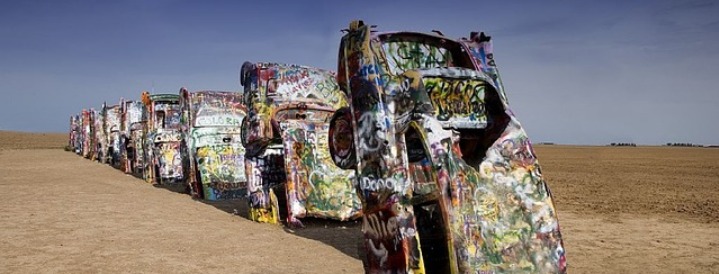2024 Amarillo Visitors Guide
In terms of history, Amarillo is a relatively young city, having been founded in the late 1880s. But, its age doesn’t mean it hasn’t had a significant impact on Texas’ economic, social, and cultural development from the very beginning.
As the Texas frontier moved westward during the nineteenth century and frontiersmen established trading routes through the area, life after the Civil War brought a huge influx of new settlers and, of course, cattle to the Pan Handle of Texas including Amarillo.
When the region’s first railroad was planted, transporting livestock, it marked the beginning of a population explosion that can still be seen today. And if cattle weren’t enough of an enterprise, natural gas was discovered in 1918 and the oil companies came clamoring to the area to get their hands on a piece of the newly discovered reserve, which was the largest known in the world at the time.
Next came the farmers, and Amarillo’s agricultural industry spiked, followed by the establishment of an Army airfield in 1942, which had a major impact on the city’s development, but when it was closed in 1967, the local economy truly suffered when 16,000 people lost their jobs.
Other than that economic slide, the city has become diverse and stable as it has grown, unlike so many other boom-to-bust towns associated with oil and agriculture.
In recent years, copper refining, meatpacking, and a plethora of manufacturing have been the driving force behind the economy.
If Amarillo’s business sector wasn’t good enough already, the city is quickly becoming known as Rotor City, USA, because it is becoming the home of the latest aviation technology, and to Bell Helicopter, where several models are assembled.
Amarillo’s name most likely comes from Amarillo Lake and Amarillo Creek, named in turn for the yellow soil along their banks and shores.
Amarillo is Spanish for yellow.
The City of Amarillo is comprised of two counties, Potter and Randall.
Attractions
Amarillo boasts a variety of opportunities for every age group and a cultural atmosphere for anyone. Some area offerings include the Globe News Performing Arts Center, Amarillo Opera, Lone Star Ballet, the Symphony Orchestra, Amarillo Little Theater, the Amarillo Art Museum, and the American Quarter Horse Center and Museum
Recreation and Leisure
The City of Amarillo’s Parks and Recreation Department operates more than 50 municipal parks including a skate park. Also, there’s the Palo Duro Canyon – which contains 18,438 acres of scenic, canyon views. The canyon is 120 miles long, 20 miles wide, and more than 800 feet deep. Its elevation at the rim is 3,500 feet above sea level.
Often, it is said that the canyon is the second largest in the United States. Additionally, the city is host to the Amarillo Gorillas professional hockey, the Amarillo Dusters professional arena football, and the Amarillo Aces professional baseball teams.
Dining
Amarillo is the home to virtually every edible offering available in most large cities. The range of eatery options is nearly limitless from gourmet to fast and fresh. Some themes in food found here are typical in all cities and include staples such as burgers, steaks, pizzas, and subs, to home cooking, cafeteria-style, Italian, seafood, Cajun, Mexican, Asian, Pacific rim, European, and specialty, to name a few. Restaurants rate from fast-food to five-star.
Communities
Located in the center of the Texas Panhandle, Amarillo claims to offer all the conveniences of big-city living in a friendly, small-town atmosphere. The Amarillo area has much to offer including the beauty of Palo Duro Canyon, a quality educational system, restaurants, and a variety of recreational activities.
The city’s population is about 185,000 residents. Of those who live here, many claim it’s the last place on earth where the true Old West remains. It has become a haven for thousands of visitors each year in search of the western expanse.
Amarillo also is known for its two blends of American eras: the working ranches, essentially unchanged from their late 19th-century roots, and the vibrant 20th-century economy. Among its many distinctions, Amarillo was named the top city in Texas to do business by Inc. Magazine.
